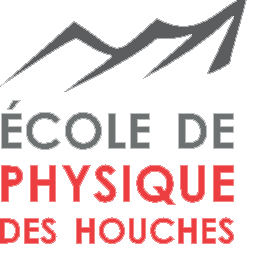INTRODUCTION
Ion traps are a robust and promising platform for quantum information processing and for the implementation of a quantum computer. However, major challenges exist in scaling these systems to the level required for full-scale quantum computing. I will describe work concerned with addressing two of these challenges; namely connecting multiple trap zones in more than one dimension,...
Low energy positron beams are used in a variety of applications, including studies of atomic and condensed matter systems.[1] We study here the properties of a magnetically guided cold positron beam (generated in the conventional manner from a 22Na radioisotope source and solid neon moderator [2]) and their relationship to the different magnetic fields along the axis of a 7 m long scattering...
The coupling of ions stored in different traps through the charges they induce in a common electrode was proposed in Ref. [1], but it has not been
accomplished yet. The completion of such a system would be an outstanding technological breakthrough in quantum electronics and would pave the
way for the implementation of hybrids systems for quantum information [2]. A pioneer work using...
Following results of laser cooling a single ion of $^{40}$Ca$^+$ to its motional ground state ($\bar{n}_z=0.02(1)$) in the axial domain of a Penning trap [1], we report simultaneous sideband cooling of both radial modes to near their ground state in the same apparatus. Sideband cooling is performed on the $S_{1/2} \leftrightarrow D_{5/2}$ electric quadrupole transition at 729 nm, and average...
Abstract: Low temperature ion-atom interactions have been the object of growing interest over the past decade. Due to the availability of laser cooling for many atoms (Li, Na, K, Rb, Cs, Ca, Sr, Ba, Yb, etc.)[1,2,3] and ions (Ca+, Sr+, Ba+, Yb+ , etc)[4,6,7], the interactions between such ions and atoms have been explored experimentally at mK temperatures[5,7,8]. In the case of optically...
Antihydrogen, the bound state of a positron and an antiproton, is being studied by the ALPHA collaboration at CERN so that it can be compared to its matter counterpart, hydrogen. Antihydrogen is synthesised by merging plasmas of antiprotons and positrons in a magnetic trap, allowing a small fraction of the antihydrogen atoms created, the coldest, to remain trapped.
Decreasing the temperature...
Several experiments at CERN aim at testing the CPT-theorem and weak equivalence principle using antimatter, among them the AEgIS experiment. Here, antihydrogen - produced via resonant charge exchange - will be used for precision measurements where the achievable sensitivity is determined by the temperature of the
antiprotons.
We are investigating laser-cooling of anionic molecules to...
Collinear laser spectroscopy (CLS) is a powerful tool, with a long and successful history at COLLAPS/ISOLDE, to access nuclear ground state properties such as spin, charge radius, and electromagnetic moments with high precision and accuracy [1]. Conventional CLS is based on the optical detection of fluorescence photons from laser-excited ions or atoms. It is limited to radioactive ion beams...
Bound state quantum electrodynamics is one of the most thoroughly tested theories in physics, but was recently challenged by measurements done on muonic atoms, where a discrepancy of >5$\sigma$ was reported between the nuclear charge radii extracted from spectroscopic measurements on muonic hydrogen and electronic hydrogen [1-4]. To gain new insights into the “proton radius puzzle” we aim to...
The ${}^{171}$Yb${}^+$ ion employed in our single-ion optical clocks features two transitions used for the realization of frequency standards, the ${}^2$S${}_{1/2}$ to ${}^2$D${}_{3/2}$ electric quadrupole (E2) $[1]$ and the ${}^2$S${}_{1/2}$ to ${}^2$F${}_{7/2}$ electric octupole (E3) $[2]$ transition. The E2 transition frequency shows a significantly higher sensitivity to frequency shifts...
Steven A. Jones (1) from the ALPHA collaboration (2)
1) Department of Physics and Astronomy, Aarhus University, DK-8000 Aarhus C, Denmark.
steven.armstrong.jones@cern.ch
2) CERN, CH-1211 Geneve 23, Switzerland
Antihydrogen offers a unique way to test matter/antimatter symmetry. Antihydrogen can reproducibly be synthesised and trapped in the laboratory for extended periods of time [1][2],...
Nearly complete quantum control of individual trapped ions has become commonplace in many precision spectroscopy, metrology, and quantum information experiments. However, while measurements of the properties of fundamental particles for CPT tests have had remarkable recent successes [1, 2, 3], they have been limited to 0.3 ppb precision by long measurement times and particle temperatures on...
Quantum electrodynamics (QED) is one of the best tested theories in physics [1]. However, energy levels in atomic hydrogen have been determined with much higher accuracy than what QED theory can provide, because it is hampered by the uncertainty in the experimentally determined proton charge radius. Therefore, spectroscopic measurements on muonic hydrogen ($\mu$H) were performed which improved...
The ALPHATRAP experiment is a Penning-trap setup dedicated to test bound-state quantum electrodynamics by determining the g-factor of the bound electron in the electric field of highly charged ions (HCI) with ultra-high precision.
The ALPHATRAP experiment is currently in the final stage of commissioning.
The setup exists of a cryogenic double Penning-trap tower in which the HCI can be stored...
The Penning-trap mass spectrometer ISOLTRAP located at the radioactive ion beam facility ISOLDE at CERN performs high-precision mass measurements of short-lived nuclides. This gives access to the study of nuclear structure effects like the location of shell and subshell closures and provides precision $\beta$-decay $Q$-values to test nuclear models and fundamental interactions. For three...
We report on our hybrid experiment which aims at studying trapped ions interacting with ultracold atoms that are off-resonantly coupled to Rydberg states. Since the polarisability of the Rydberg-dressed atoms can be extremely large, the interaction strength between ions and atoms increases tremendously as compared to the ground state case. Such interactions may be mediated over micrometers and...
